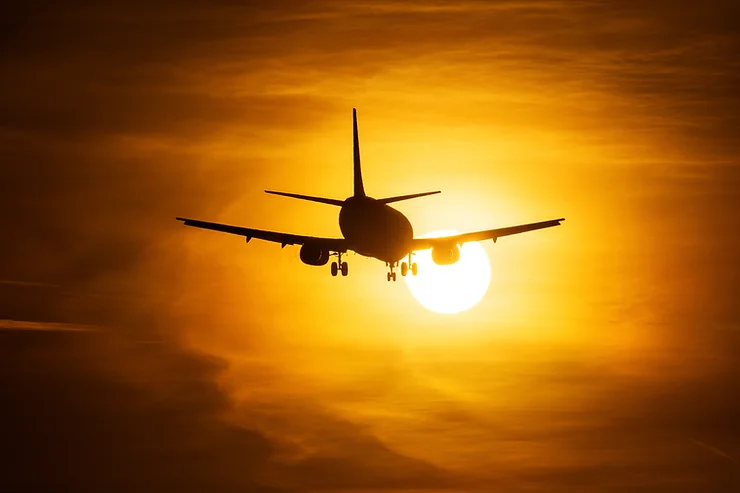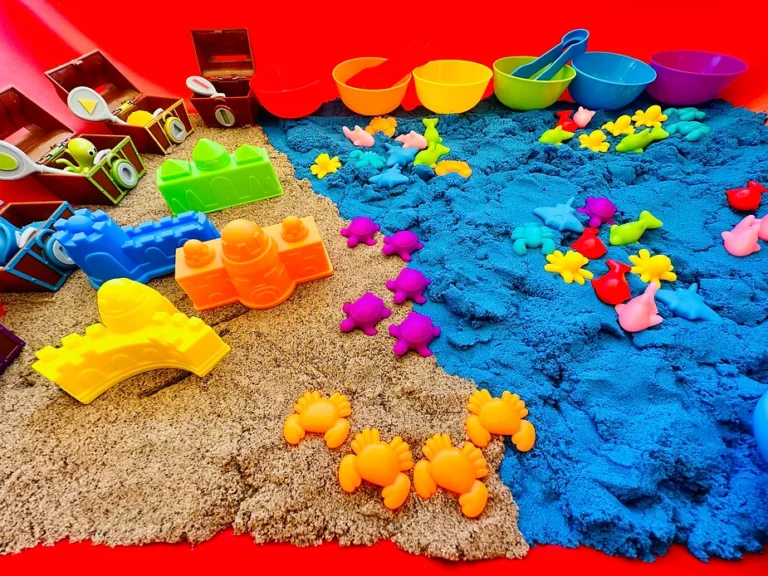Essential Advice for Flying With an Autistic Child

This post may contain affiliate links and I could earn a small commission at no cost to you. However, I will never recommend anything that I do not believe in or use myself. You can read more about my disclosure policy here.
I’m thrilled to announce that our family embarked on an exciting adventure to Oahu, Hawaii!
This marked our very first trip to this stunning destination as a family of five, and we were all buzzing with anticipation.
As we eagerly prepared for this journey, we faced a unique challenge head-on – flying with an autistic child.
Our family consists of my husband, our three wonderful kiddos (a 7-year-old and 4-year-old twins), and me.
While we were all excited to explore new horizons with our little ones, we recognized that the airport and airplane experience could be overwhelming, especially for children with sensory sensitivities and communication challenges.
However, with meticulous planning, patience, and a deep understanding of our child’s needs, we found that flying with an autistic child could not only be manageable but also a deeply enriching experience for our entire family.
Keep reading as we share 10 invaluable tips to ensure a seamless journey and offer a bonus section detailing 20 engaging activities to keep kids entertained during the flight.
So, join us on this adventure, and let’s make unforgettable memories together!
10 Tips for Flying with an Autistic Child

1. Plan and Prepare in Advance
Before flying with an autistic child, look into the airlines that offer the most accommodating services for passengers with autism. Some airlines have autism-friendly programs, which might include staff training in autism awareness, sensory-friendly in-flight entertainment, and priority boarding for families with autistic children.
Check the airport websites for detailed layouts and amenities. Knowing the airport layout can help you plan your route and locate quiet spaces or sensory rooms that some airports provide for individuals with sensory sensitivities.
Once you’ve chosen your airline, contact them well in advance of your travel date. Explain your child’s specific needs, such as sensory sensitivities or dietary requirements, and inquire about their policies and services. Airlines typically require at least 48-72 hours notice for special accommodations, so early communication is essential.
Some airlines may request documentation, such as a doctor’s note, to support your request for accommodations. Make sure you have any necessary paperwork prepared and ready to provide if requested.
When booking your flight, consider seat selection carefully. If your child has sensory sensitivities, they might be more comfortable in a window seat, away from the aisle where there’s more foot traffic. Communicate your seat preferences to the airline during your early contact with them.
TSA Cares
TSA Cares offers valuable assistance to families flying with an autistic child, ensuring a smoother airport experience. Families can contact TSA Cares (when traveling in the US) at least 72 hours before their flight to request support.
TSA officers receive specialized training to provide understanding and assistance, including guidance through security procedures. For autistic children, this can mean a quieter, less stressful screening process, with options like a dedicated screening lane or a private room if needed.
Additionally, TSA Cares can arrange for a Passenger Support Specialist to meet the family at the airport, offering personalized assistance from check-in to boarding. This service not only ensures the safety and comfort of the child but also provides peace of mind for the entire family, making air travel more accessible and enjoyable.
2. Use Visual Supports
Create a personalized social story or visual schedule that caters to your child’s unique needs and preferences. Include images of your specific airport, the airline you’ll be using, and the airplane model if possible. Break down the story into simple, sequential steps with clear visuals.
In the days leading up to the trip, engage your child in daily discussions about the upcoming journey. Review the social story or visual schedule together, encouraging questions and conversations about what to expect.
Use a large wall calendar or a digital scheduling app to visually mark the days leading up to the trip. Incorporate pictures or symbols representing the airport, the airplane, and the destination to build excitement and anticipation.
Consider simulating aspects of the airport experience at home. Pretend to go through security checks or pack a “suitcase” together. This hands-on approach can reinforce the information from the social story.
3. Choose the Right Time to Travel
Evaluate your child’s daily routine and schedule. If they have specific times for meals, medications, or sensory breaks, try to plan your flights around these schedules.
Overnight or early morning flights (often referred to as “red-eye” flights) can be a good option if your child tends to be calmer or sleepier at these times. Red-eye flights often have fewer passengers, reducing the sensory stimulation.
When booking connecting flights, consider longer layovers. This allows for more flexibility in case of delays or disruptions and provides extra time for your child to relax between flights.
If your child tends to be more sensitive to certain stimuli, like noise or motion, choose seats accordingly. Seats near the front of the plane tend to be quieter, while those over the wings experience less motion.
4. Bring Comfort Items
Encourage your child to select a few of their favorite toys or a beloved blanket to bring on the flight. These familiar items can provide a sense of security and comfort in an otherwise unfamiliar environment.
Pack a sensory kit with items that can help soothe and engage your child during the flight. Fidget toys, stress balls, chewable jewelry, or weighted blankets can be beneficial.
Ensure your child has a small backpack or carry-on bag where they can keep these comfort items easily accessible. This allows them to take control of their own belongings, which can be empowering and comforting.
Discuss with your child what to do if they misplace or forget any of their comfort items. Have a backup plan in place, such as a comfort item you keep in your bag, to prevent potential meltdowns or distress.
5. Noise-Canceling Headphones
Invest in high-quality noise-canceling headphones designed for children. Look for headphones that are comfortable to wear for extended periods and are adjustable to fit your child’s head comfortably.
When flying with an autistic child, noise on an airplane, such as engine sounds or cabin announcements, can be distressing for individuals with sensory processing disorder or sensory sensitivities. Noise-canceling headphones can significantly reduce these auditory triggers, creating a more peaceful and calming environment.
Introduce the headphones to your child well before the trip. Let them wear the headphones during daily activities or when watching familiar videos, so they become accustomed to the sensation and can associate them with comfort.
On the flight, encourage your child to wear the noise-canceling headphones during periods of increased noise, such as take-off, landing, or meal service. This can help them stay more relaxed and less overwhelmed during these potentially stressful times.
Related: Common Warning Signs Of Sensory Processing Disorder In Kids
6. Dress Comfortably
Choose clothing made from soft, non-restrictive materials. Avoid scratchy tags or seams that might cause discomfort or irritation. Cotton clothing is often a good choice, as it is breathable and tends to be comfortable against the skin.
Depending on the temperature of the airplane cabin, it can sometimes get chilly. Dress your child in layers, so you can easily adjust their clothing to keep them comfortable throughout the flight. This way, you can add or remove layers as needed without causing disruption.
Take into account any sensory challenges your child may have. If your child is particularly sensitive to certain textures or prefers snug clothing, select garments that align with their sensory preferences.
Ensure your child’s comfort items are easily accessible in their carry-on bag. If their favorite stuffed animal or blanket provides comfort, they should be able to reach it without difficulty.
8. Be Mindful of Security Checks
When you arrive at the security checkpoint, approach the nearest officer and calmly inform them about your child’s condition.
Explain any potential sensitivities your child may have to certain touch or visual stimuli, such as the metal detectors or body scans. Communication helps security personnel understand your child’s needs and adapt their approach accordingly.
Use visual supports like a laminated card that explains your child’s condition and sensitivities. This card can be presented discreetly to security personnel, aiding in understanding and empathy during the screening process.
8. Snacks and Drinks
Include a wide selection of your child’s favorite snacks in your carry-on bag whenflying with an autistic child. Familiar snacks provide a sense of comfort and assurance in an unfamiliar environment. It also ensures that your child has access to food they enjoy, as airline meals might not always align with their preferences or dietary restrictions.
Some children with autism find comfort in sensory friendly snacks, such as crunchy or chewy items like carrot sticks, apple slices, or chewable tubes. Including these in your snack selection can be beneficial.
If your child has dietary restrictions or specific nutritional needs, plan accordingly. Some airlines offer special meals (e.g., gluten-free, dairy-free) if requested in advance, but it’s always a good idea to have backup snacks just in case.
9. Practice Self-Compassion
Understand that despite meticulous planning, not everything will go as planned during your journey. Flights can be delayed, schedules may change, or unexpected challenges might arise. Accept that these disruptions are part of traveling and try to stay flexible.
Develop strategies to manage stress, both for yourself and your child. Breathing exercises, sensory breaks, or engaging in calming activities can help both of you stay composed during moments of tension.
Give yourself and your child permission to take breaks when needed. If the airport becomes overwhelming, find a quiet corner or designated sensory room to decompress. Sometimes, a short break can make a world of difference.
10. Advocate for Your Child
If you encounter any issues or challenges during the journey, don’t hesitate to assertively communicate your child’s needs to airline staff, flight attendants, or airport personnel. Explain your child’s condition calmly and clearly, and request any necessary accommodations.
Familiarize yourself with the airline’s policies regarding passengers with special needs. Familiarity with your rights can empower you to advocate effectively for your child and ensure their comfort and well-being throughout the journey.
Stay informed about your flight’s status, especially during layovers or if there are any delays. Being proactive and aware of any changes in your travel plans can help you anticipate and address potential challenges in advance.
Related: How to Calm Autistic Meltdowns: 7 Tips that Work
20 Best Activities to Keep Kids Entertained on a Plane
Check out our list of best activities to keep your autistic child entertained while flying:
1. Amazon Fire Tablet
The Amazon Fire Tablet for kids is a game-changer!
Load it up with your kids’ favorite shows, games, and books before the flight.
It keeps them entertained with endless content, and the parental controls let you manage what they can access, so it’s worry-free.
Plus, it’s durable enough to survive a few drops.
2. Headphones
Headphones are must-have for any flight!
Kid-sized headphones mean they can watch their shows and play their games without disturbing everyone else on the plane.
Look for ones with volume limits to protect their hearing, and choose fun colors or designs to make them more appealing.
3. Fidget Toys
Fidget toys are perfect for little hands that need to stay busy!
From simple spinners to intricate cubes, fidget toys can help kids focus, reduce anxiety, and keep them occupied without making noise or creating a mess.
Related: Ultimate Toy Guide: 30 Best Sensory Toys for Autistic Children
4. Color Wonderful Coloring Books
Color Wonderful Coloring books are endless fun with colors!
These books are filled with intricate designs and plenty of pages to color, providing hours of creative fun.
They’re great for flights because they’re quiet and mess-free, especially if you bring along some colored pencils or twistable crayons.
5. Drawing Toys
Drawing toys like doodle pads or magnetic sketch boards are no mess, all fun!
No need for paper or crayons. Kids can draw and erase over and over, keeping them entertained while sparing you the hassle of cleaning up scattered supplies.
Plus, they can create without worrying about running out of paper.
6. Plus Plus Tube
Plus Plus Tubes are compact construction fun!
A tube full of small, puzzle-like pieces that can be connected in countless ways.
They’re perfect for sparking creativity and keeping kids engaged as they build shapes, figures, and even little scenes.
7. WikkiStix
WikkiStixs are bendable, moldable fun!
These wax-coated sticks can be bent, twisted, and shaped into all sorts of fun creations.
They’re quiet and don’t require any glue or scissors, making them perfect for flights.
Kids can create pictures, shapes, or even little 3D sculptures.
8. Activity Book
These activity books are jam-packed with puzzles, mazes, games, word searches, and more!
They’re great for keeping kids’ minds active and engaged.
Activity books cater to a variety of interests and skill levels, so there’s always something new to try.
9. Spot It! Classic Mini Card Game
Spot It! Classic Mini Card Game is quick and fun!
This fast-paced card game is all about spotting matching symbols.
It’s easy to learn and quick to play, making it perfect for short bursts of fun.
It’s also small and portable, fitting easily into a carry-on.
10. Scratch Art
Scratch Art magical art reveal!
These kits let kids scratch off a black coating to reveal vibrant colors or patterns underneath. It’s like magic!
They’re mess-free and very engaging, making them perfect for quiet, creative play on a plane.
11. Spiral Art
So fun making mesmerizing Spiral Art designs!
With a few gears and pens, kids can create beautiful spiral designs.
It’s a fun and relaxing way to pass the time, and the results are always impressive.
Spiral art kits are compact and easy to use, perfect for travel.
12. Search and Find Books
Search and find books are a treasure hunt in a book!
Kids love hunting for hidden objects in these detailed, colorful scenes.
It’s like a treasure hunt on every page, keeping them entertained and boosting their observation skills.
13. Metal Blox Go!
Metal Blox Go! are tiny building wonders!
These tiny metal building blocks let kids create intricate, sturdy structures.
They’re great for developing fine motor skills and creativity, and the compact size makes them easy to pack for a flight.
14. Melissa and Doug Magnetic Jigsaw Puzzle
The Melissa & Doug magnetic jigsaw puzzle offers puzzle fun without losing pieces!
These puzzles have magnetic pieces that stick to the board, so you don’t have to worry about losing pieces mid-flight.
They’re engaging and fun, providing a satisfying challenge for kids.
15. Mind Puzzle
Maze ball is a mind-puzzle challenge!
This 3D puzzle ball is like a maze that you solve by tilting and turning it to guide a small ball through the tracks.
It’s a fun, hands-on challenge that can keep kids captivated for a long time.
16. Bendon Reusable Sticker Book
Bendon reusable sticker books are stickers without the waste!
Kids can place stickers over and over, creating different scenes and stories each time.
It’s a great way to encourage imagination and storytelling, and the reusable stickers mean less waste and more fun.
17. Dot Sticker Art
Dot sticker art is easy and fun creativity!
These kits let kids create colorful pictures using dot stickers. It’s a simple but satisfying activity that’s perfect for flights because it’s quiet, mess-free, and keeps kids focused.
18. Skillmatic Search & Find
Skillmatic search and find activities are engaging and educational!
These books are full of fun challenges where kids have to find specific objects in busy scenes.
They’re great for improving observation skills and keeping kids entertained.
19. Crayola Activity Pad
Crayola’s Activity Pads are all-in-one fun!
These pads are packed with a variety of activities like coloring pages, puzzles, and games.
They’re a one-stop shop for keeping kids busy, and Crayola’s name means quality materials that are fun and easy to use.
20. Your Kid’s Favorite Toys
Letting your child have a few of their favorite toys can be incredibly beneficial flying with an autistic child.
Familiar toys provide a sense of comfort and security in an unfamiliar environment, helping to reduce anxiety and keep them at ease during the journey.
Additionally, these toys can act as a form of emotional support, serving as a distraction and helping kids cope with any potential travel-related challenges, making the overall flying experience more enjoyable for both kids and parents.
Final Thoughts
Flying with an autistic child requires thoughtful preparation, but it can also be a wonderful opportunity for your child to experience new places and create lasting memories.
By implementing these tips and being proactive in accommodating your child’s unique needs, you can turn air travel into an enjoyable adventure for the entire family.
Safe travels!
Recommended
- How to Calm Autistic Meltdowns: 7 Tips that Work
- Ultimate Toy Guide: 30 Best Sensory Toys for Autistic Children
- Positive Affirmations For Autistic Children You Need To Know






